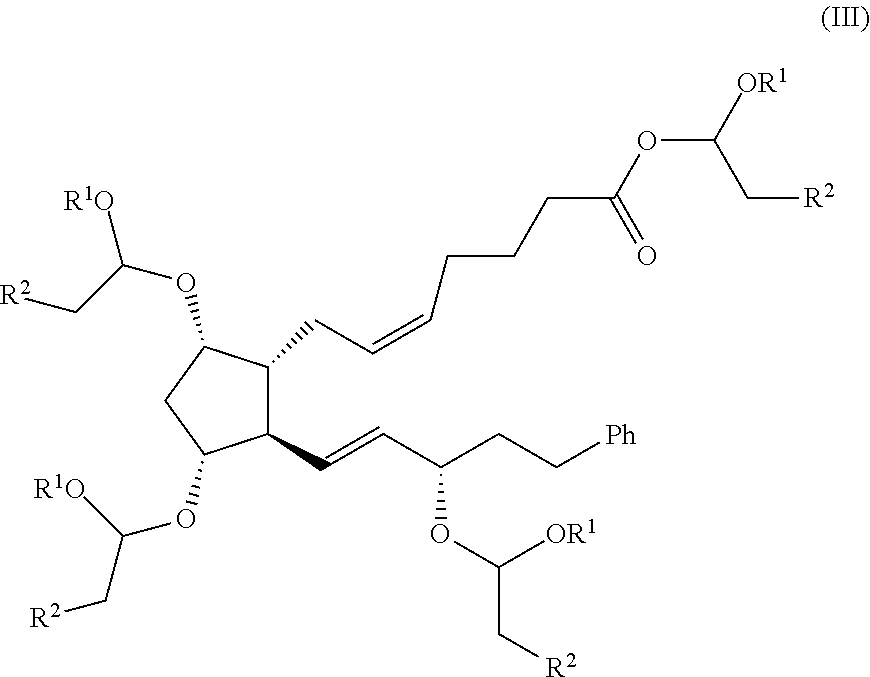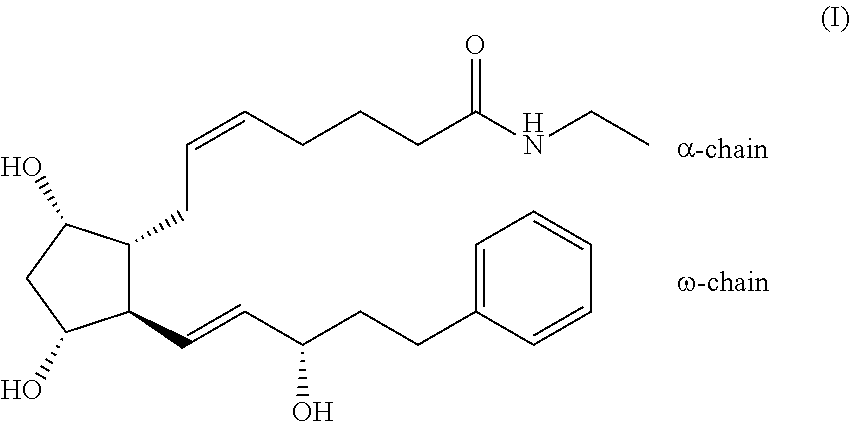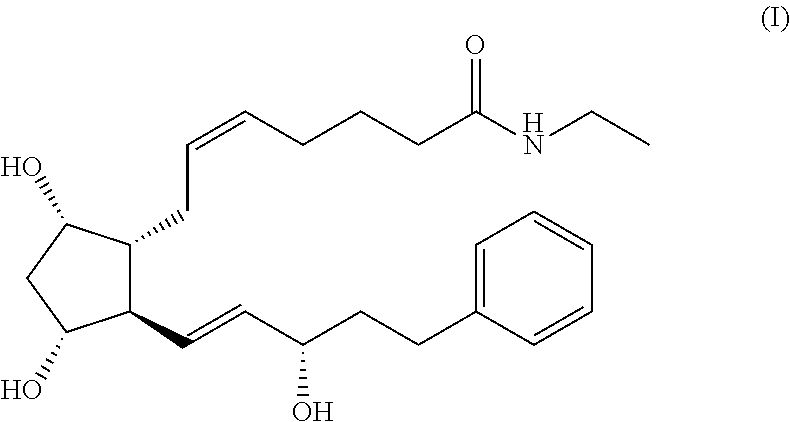Process for the preparation of bimatoprost
a technology of bimatoprost and process, which is applied in the preparation of organic compounds, carboxylic acid esters, organic chemistry, etc., can solve the problems of insufficient purity of bimatoprost, low overall yield, and very low speed of the process, and achieve high yield and purity
- Summary
- Abstract
- Description
- Claims
- Application Information
AI Technical Summary
Benefits of technology
Problems solved by technology
Method used
Image
Examples
example 1
on of (Z)-7-((1R,2R,3R,5S)-3-(1-butoxyethoxy)-2-((3S,E)-3-(1-butoxyethoxy)-5-phenylpent-1-en-1-yl)-5-hydroxycyclopentyl)hept-5-enoic Acid
[0079]
example 1a
n of (3aR,4R,5R,6aS)-5-(1-butoxyethoxy)-4-((3S,E)-3-(1-butoxyethoxy)-5-phenylpent-1-en-1-yl)hexahydro-2H-cyclopenta[b]furan-2-one
[0080]In a three-necked flask under nitrogen atmosphere (3aR,4R,5R,6aS)-5-hydroxy-4-((S,E)-3-hydroxy-5-phenylpent-1-en-1-yl)hexahydro-2H-cyclopenta[b]furan-2-one (10.0 g, 33.1 mmol), butyl vinyl ether (36.44 g, 364.1 mmol), pyridinium p-toluensulfonate (0.42 g, 1.66 mmol), and 90 ml of toluene were added. The resulting suspension was stirred at 20-25° C. from 90 to 180 min until complete dissolution. Once the mixture was dissolved, the end of the reaction was monitored by thin-layer chromatography (TLC). Once the reaction was completed 100 ml of a saturated NaHCO3 solution were added, the mixture was stirred, then allowed to stand, and the phases were separated. The resulting organic phase was washed with 50.0 ml of a NaCl saturated solution, and after stirring and allowing standing the solution the phases were separated. The final organic phase was dried ...
example 1b
n of (3aR,4R,5R,6aS)-5-(1-butoxyethoxy)-4-((3S,E)-3-(1-butoxyethoxy)-5-phenylpent-1-en-1-yl)hexahydro-2H-cyclopenta[b]furan-2-ol
[0081]The residue obtained in Example 1 (16.63 g, 33.1 mmol) was dissolved in 150 ml of anhydrous tetrahydrofuran (THF) under nitrogen atmosphere. The resulting yellow solution was cooled to from −5 to 0° C. and added drop wise a 25.0% w / w solution of diisobutylaluminium hydride (26.7 mL, 39.72 mmol) in toluene maintaining the temperature range. Once the addiction is finished the mixture was stirred at 0° C. for 60 min and the reaction was monitored by TLC. Once the reaction is completed the mixture was cooled down to −20° C. and 2.0 ml of methanol were added. The resulting slightly yellow solution was stirred at 0° C. for 15 minutes and then 150 ml of a saturated solution of potassium sodium tartrate tetrahydrate and 150 ml of ethyl acetate were added, and the mixture was stirred, allowed to settle and phases were separated. The resulting aqueous phase was...
PUM
| Property | Measurement | Unit |
|---|---|---|
| Temperature | aaaaa | aaaaa |
| Fraction | aaaaa | aaaaa |
| Fraction | aaaaa | aaaaa |
Abstract
Description
Claims
Application Information
 Login to View More
Login to View More - R&D
- Intellectual Property
- Life Sciences
- Materials
- Tech Scout
- Unparalleled Data Quality
- Higher Quality Content
- 60% Fewer Hallucinations
Browse by: Latest US Patents, China's latest patents, Technical Efficacy Thesaurus, Application Domain, Technology Topic, Popular Technical Reports.
© 2025 PatSnap. All rights reserved.Legal|Privacy policy|Modern Slavery Act Transparency Statement|Sitemap|About US| Contact US: help@patsnap.com



